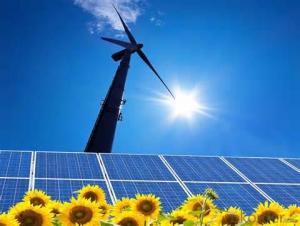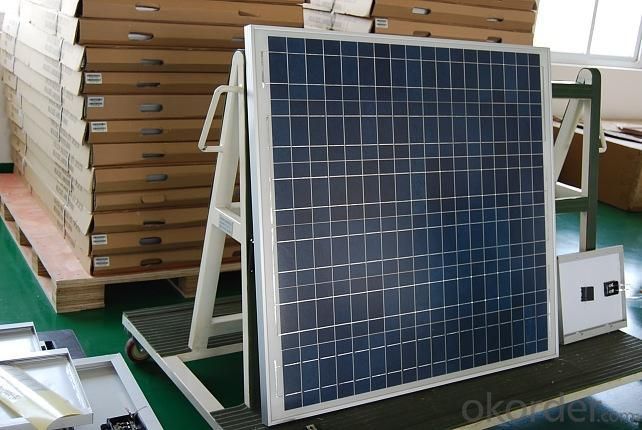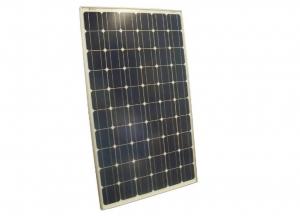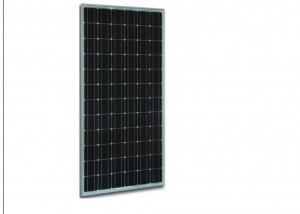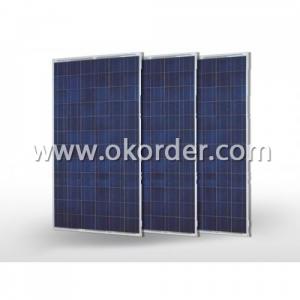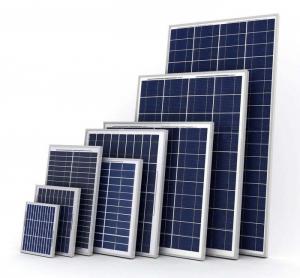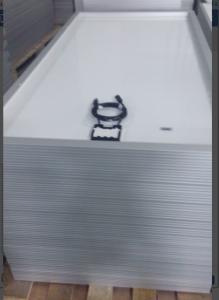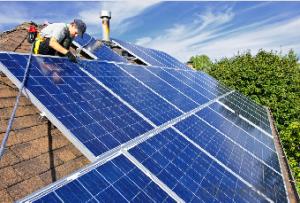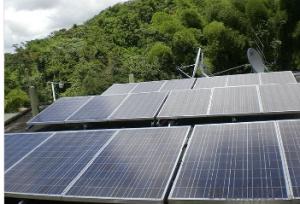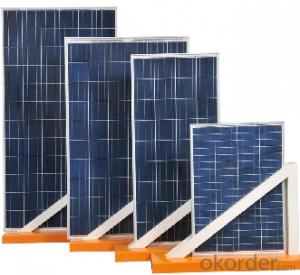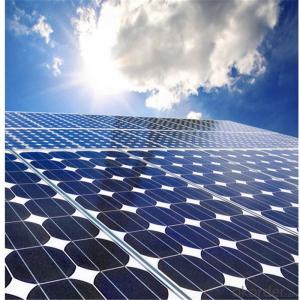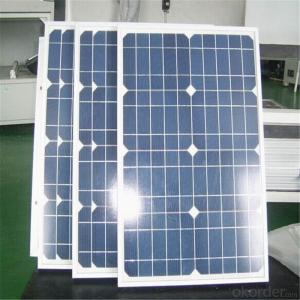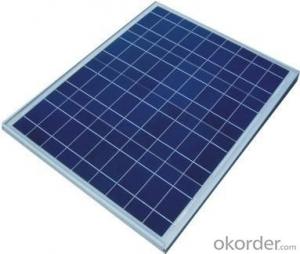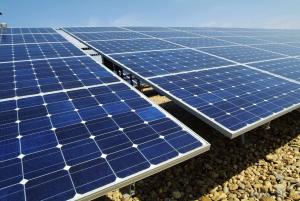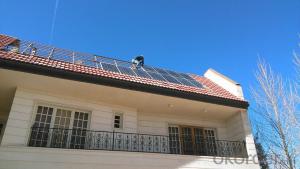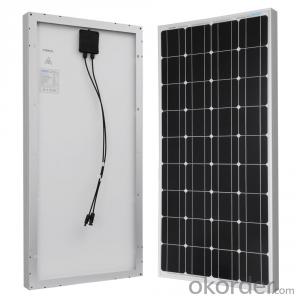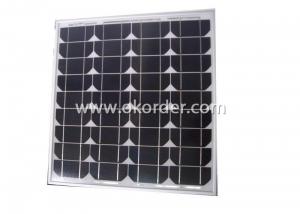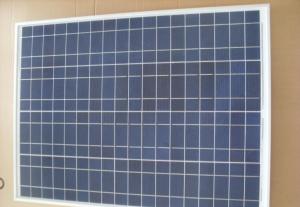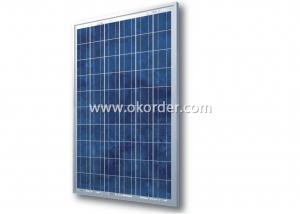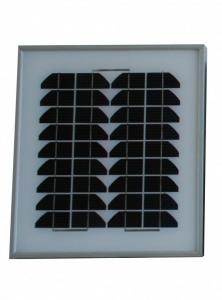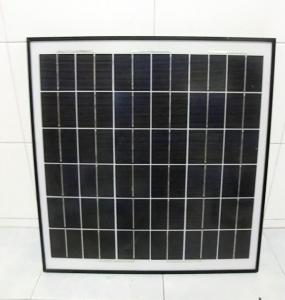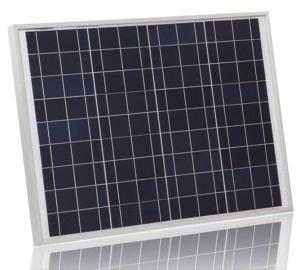180W Poly Solar Module with High Efficiency for Van Solar Panels
- Loading Port:
- Tianjin
- Payment Terms:
- TT OR LC
- Min Order Qty:
- 1 watt
- Supply Capability:
- 100000 watt/month
OKorder Service Pledge
OKorder Financial Service
You Might Also Like
Specification
Product Description:
1.Structure of Solar Module Description
CNBM Solar's photovoltaic module is designed for designed for large electrical power requirement. It is the optimal choice for both on-grid and off-grid power systems. CNBM Solar offers high performance of power per square foot of solar array.
2.Main Features of the Solar Module
Solar Cell: High efficency crystalline solar cell. Even if under the weak light, the solar module can produce maximum power output.
Tempered glass: Anti-reflecting coating and high transmission rate glass increase the power output and mechanical strength of solar module.
EVA and TPT: Using high quality EVA and TPT to prevent destroying and water.
Strong aluminum frames to strengthen the load hold and to stand against high wind.
Junction box: Multi function junction box with water proof.
Long lifetime: ≥25 years; Less power decrease.
Good performance of preventing from atrocious weather such as wind and hails.
Resisting moisture and etching effectively, not effected by geology.
The certificate issued by international authority: UL, TUV, IEC, VDE, CE.
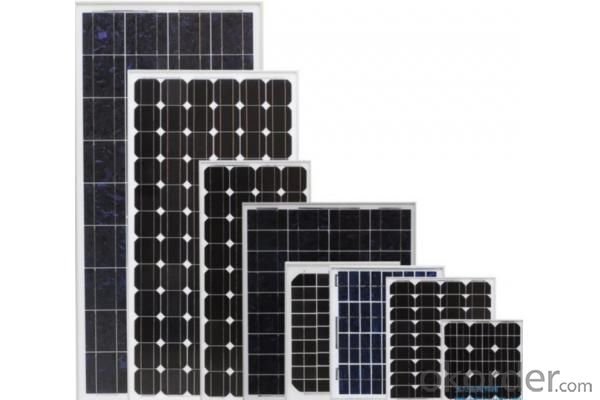
Solar panel working process
In addition to being the ultimate source of all life on earth, the sun is an infinitely renewable, completely pollution-free source of electricity. Instead of burning fossil fuels dug up from the ground in a big power plant – a very 19th century, industrial age approach, when you think about it – solar panels convert sunlight directly into electricity, with no harmful emissions.
The basic unit of a solar panel is a solar cell, which usually consists of one or two layers of silicon-based semiconductor wafers. When struck by the photons in sunlight, the solar cell generates an electrical charge due to the "photovoltaic effect" – which is a pretty good name, since it produces voltage from photons. The flow of these electrons moves in a steady electrical current from one side of the cell to the other.
Dozens of these PV cells are packaged together into solar modules, which in turn are packaged into solar panels that are mounted on a rooftop and arranged to maximize their hours of exposure to direct sunlight. Because the electricity generated by all those solar cells is direct current (DC), it is then sent to an inverter that transforms the power into the same alternating current (AC) used by the appliances in your home and the local utility electricity distribution grid. Increasingly, these inverters are getting "smart," providing data monitoring for solar installation performance and other grid integration services.
- Q: I'm writing a post-apocalyptic story in it the main character finds a warehouse. Eventually he finds out the roof is covered with commercial solar panels. Given it's been over a year since the majority of the world died no manainence was done, do they still work?
- In my experience working with solar panels, I've found that the panels themselves are robust and can last years. How that energy is transferred from the panel to perform work (sorry for the boffinism) is where the complexity emerges, namely due to the fact solar panels produce DC current, and nearly all of our electrical appliances use AC current. In most cases, solar panels will either send energy through a DC/AC inverter directly to be used for appliances, or stored in deep cycle batteries, then converted to AC using an inverter when the user wants to use his/her appliance. Now to answer your question: the solar panels will be fine, and could conceivably be in fine working order with AC current available IF... and I cannot stress this enough (namely through years of field experience dealing with solar powered scientific instrumentation that was working well and then mysteriously not working)... IF rats and other rodents haven't eaten through the wires. This is probably the most likely reason that a set of solar panels wouldn't be working in your given scenario. Hope this helps, and good luck!!
- Q: Is it possible to store energy from solar panels for night?
- Yes. okorder /) and informed me of all the incentives I was eligible to receive as well as giving me a break-even analysis, estimated annual savings, and projected return on investment. They are a great resource to begin your solar pursuit. Good Luck!
- Q: Can solar panels be installed on a sports stadium?
- Yes, solar panels can be installed on a sports stadium. In fact, many stadiums around the world have already adopted solar energy systems to generate electricity and reduce their carbon footprint. These panels are typically installed on the roof or in parking lots surrounding the stadium, taking advantage of the large surface area available. Installing solar panels on a sports stadium not only helps in generating clean energy but also serves as a visible statement of the stadium's commitment to sustainability.
- Q: I contend:As far as the solar panels causing global warming I'll try to explain. If you put a black panel on the ground or on your house and don't connect it to anything, it will absorb solar energy (heat) during daylight and release it at night (radiation). The net heat gain is zero. If you hook up a solar panel in the same place but hook it up to batteries, charge the batteries during sunlight hours and using that energy to electrically heat the home at night. The panels will absorb solar energy during the day but will convert that to electrical energy in the batteries instead of radiating it back into space at night. The result is a net gain in earth's temperature.Right or wrong?
- One piece of technology: Hydro-energy storage. Pump water up to an artificial lake at the top of a mountain to store energy, and then let the water run down through turbines to retrieve the energy later, eliminating most or all of the need for batteries. Usually this stuff saying renewables suck is BS when you actually try. Yet another method, are solar power towers which last longer than solar panels and continue to generate energy at night. While a non-universal storage method, it's good for storing the sun's energy in the mechanism that generates the power. According to some studies, they are the best option next to wind turbines. I'll describe a particular model. A field of mirrors beams light to a part of the tower which contains salt, for it's incredible heat storage capacity when molten. In turn, the heat from that region heats water which spins some turbines, generating lots of energy. Currently, the best models continue to generate electricity at night and for a few consecutive cloudy days. I think whoever was saying that was probably trying to delay response. There are too many ways around that to be true, and saying that it contributes more to Global Warming than fossil fuels is a lie. This is why some government intervention is needed: The companies aren't responding to new ideas, and they happen to often be fossil fuel companies as well. If you don't create the environment where it lowers fossil fuel consumption, then they win because prices stay high.
- Q: Is it really necessary to make solar panels that expensive?
- Making okorder /
- Q: I've built a set of lights, fan and a clock running on only solar power. The problem is, i have to present it tomorrow and when the light isn't particularly strong it won't work too well. It works flawlessly when its under my desk light on max brightness but the only the light works when i set it to low brightness. Currently, tomorrow in my city it won't be sunny so any advice for trying to make it work under low light?
- Solar panels are designed to be used to recharge a battery or series of batteries, not for direct power. That is the inherent weakness of solar systems. The only way to have it work in low light conditions if to have several cells wired in series and have a voltage regulator to limit the amount of voltage that can be supplied. Other than that, add a battery and a charging circuit that the cell would supply power to.
- Q: Can solar panels be installed on a hospital or healthcare facility?
- Yes, solar panels can be installed on a hospital or healthcare facility. In fact, many healthcare facilities are increasingly adopting solar energy as a sustainable and cost-effective solution to meet their electricity needs. Solar panels can be installed on rooftops, parking lots, or open land adjacent to the facility, providing clean and renewable energy that can help reduce electricity costs and carbon emissions. Additionally, solar installations can contribute to the facility's green image and commitment to environmental sustainability.
- Q: Is there a small solar panel system that I can put in my bedroom window and charge my phone and run an alarm clock off of? Or one I can run a microwave off of?
- Yeah they have them to charge phones but to use a microwave you would have to use one to charge a 2 volt battery with them from there an inverter . You could probably get a system like that for around $50 or so off OKorder . Don't get me wrong solar panels do cost allot but for what you want it for just to run a microwave isn't going to cost you all that much . Just go to OKorder and look for solar phone charger and get an idea of what you want . Thumb up for Sam above me . People just think everything is expensive because they put no effort in there shopping .
- Q: i trying to make a solar panel. right now i dont have money to go and buy a copper sheet. so can i make it out of aluminum foil. if there is a way please tell me how. and what do i use for wires. i making this to charge batteries.
- No but look in youtube for other ways of charging batteries . There is allot of neat ideas like building a small wind generator from scrap parts such as old speaker magnets copper wire out of transformers things that most people toss in the junk .
- Q: Can solar panels be installed on wineries or vineyards?
- Yes, solar panels can be installed on wineries or vineyards. In fact, they are increasingly being installed in these locations due to the vast open spaces available for solar panel arrays and the potential for significant energy savings. Additionally, solar panels can be integrated into the design of winery buildings or mounted on elevated structures, minimizing their impact on the vineyards.
Send your message to us
180W Poly Solar Module with High Efficiency for Van Solar Panels
- Loading Port:
- Tianjin
- Payment Terms:
- TT OR LC
- Min Order Qty:
- 1 watt
- Supply Capability:
- 100000 watt/month
OKorder Service Pledge
OKorder Financial Service
Similar products
Hot products
Hot Searches
Related keywords
